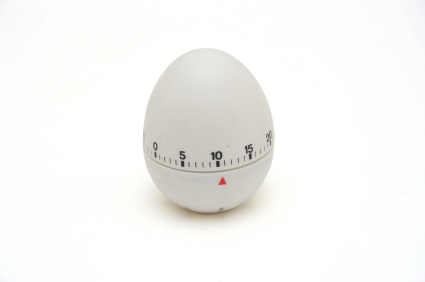The morning gong woke us at 4:00AM. We were to get up and sit: spine straight, chin tucked, hands in our laps and direct all of our attention to the breath flowing in and out of our nostrils for two hours until breakfast time.
The first morning’s meditation was a struggle, not just because of an overall grogginess but also because of a never-ending stream of reminiscences, regrets, recriminations, resentments, assessments, aspirations, apprehensions, speculations, machinations, anxieties, fantasies and other errant thoughts–one after the other.
Up until now there had always been something to distract me, something to silence that stream. For me it was usually work, hulu, twitter, facebook, reading, writing, coding, or beers with friends. These activities kept me from recognizing just how scattered, how unfocused and untamed my mind really was. In the past few years, however, even the distractions didn’t seem to work. I might have been watching one of my favorite shows on hulu, but for the life of me I couldn’t seem to watch it the whole way through. I’d pause it at the ten minute mark and check twitter/facebook/email/my phone/whathaveyou and then go back to the show (given that I wasn’t distracted to do something else after that).
I knew that I wasn’t the only one with a shattered attention span. One only has to look at the proliferation of productivity apps, guided relaxation tapes, and blog posts like this to know that people are desperately searching for ways to stay focused.
Personally, I had found certain guided meditation mp3’s to be most the helpful for regaining focus. I would close my eyes and count from 1 to 10 after every breath. After about ten minutes or so I’d let go of the count all together and focus only on the breath. It usually worked. If I was in a good or even neutral mood at the time of meditation I’d find that just 20 minutes helped me stay focused and present throughout the day.
If I was in a foul mood, however, the meditation would provide me with a feeling of well being at first, and then after an hour or so the negative thoughts and emotions would start to creep in, and before I knew it I was upset, distracted, or stressed out again. It felt as though my occasional 20-minute sessions of meditation provided only a temporary relief, like I was snipping away at the branches of the tree while getting nowhere near the roots.
Who Teaches the Technique?
About a year ago, Creighton, a friend of mine, told me about a 10-day retreat at a “Meditation Center” in Onalaska, WA (one of many worldwide). Onalaska is a rural town about halfway between Seattle and Portland. This center, among the many others, are built and maintained by an organization founded by S.N. Goenka, who also teaches the technique of Vipassana meditation to all the students through audio and video recordings of his instructions and discourses. “Vipassana” means to see things “as they really are” and is allegedly the meditation technique that the Buddha taught at his own meditation centers in India more than 2500 years ago.The pure technique was all but lost nearly everywhere but in Burma where it had been passed undiluted from teacher to student until the present day.
The organization that runs the centers is nonsectarian and people from all faiths are welcome to attend the retreats to become established in the technique. There is no course fee and all costs of the retreat are covered by donations which students can make after completing the course.
After hearing about the course, and reading about my friend’s own experience on his blog, it was only a matter of time before I had decided to make a commitment myself and enroll.
Course Rules and Timetable
On the night of our arrival, we were assembled in the men’s section of the dining hall for orientation. Distractions during the retreat were to be kept to a minimum. We were forbidden to have any cell phones, reading materials or writing materials on us and were to turn them in for safe keeping at the beginning of the course. Men and women were to be segregated at all times except when we gathered in the meditation hall. We were forbidden to talk with, touch or make eye contact with any of our fellow students (questions for the assistant teachers were allowed during prescribed times, however). Finally, we were expected to keep to the course timetable, which meant nearly 10.5 hours of meditation per day. They served breakfast and lunch but no dinner ( the best meditation is done on an empty stomach!), although we did get an hour break at 5:00PM for tea and fruit.
Days 1-3: Clearing the Mind and Sharpening Focus
The meditations in the main hall were guided by recordings of Goenka himself who led us step by step through the technique. For the first three days we focused on “Anna Panna” or “Awareness of Breathing” meditation.
Of all days the first was the most difficult. I was already in a state of agitation when I had arrived at the center and focusing on my breath with eyes closed only seemed to amplify this restlessness. I had expected the meditation exercise to have a calming effect, since that had been my experience with most “awareness of breathing” exercises I had tried in the past. There was one major difference, however. We weren’t allowed to use any visualizations, mantras or counting to help focus our awareness.
Counting my breath had always made meditation easy. When I did this I could usually clear my head of most thoughts within the space of ten to fifteen minutes. I came to realize, however, that counting the breath was essentially the crutch that kept me from developing a deeper, more sustainable level of focus.
Counting is a crutch because it only clears the conscious mind (the thoughts and feelings we’re currently aware of) while it does nothing to clear the subconscious mind, the wellspring of those thoughts. If the mind was to be likened to a room, and our muddled thoughts was steam fogging up that room, we’d find that the subconscious would take up nearly the whole space.
In this room the conscious mind, or all the surface thoughts and emotions that we’re aware of, would probably be the size of a medicine cabinet mirror on the wall. To focus on one’s breath while simultaneously counting from one to ten would essentially be like wiping off the steam from the mirror. The conscious mind may be clear for a day or two, but eventually the fog starts to creep back in, and then we’re back where we started.
To focus on the breath without counting is like opening the door to the room. The steam flows out of the room but the mirror remains fogged up. Because the conscious mind is the only part of the mind that we are aware of, it appears as though we’re making no progress, when in truth we’re making significant progress.
The first day of meditation felt very much like this. I don’t think I’d be able to count how many times I found myself diverted or distracted from the breath by this or that random thought. Even when I was able to focus on the breath, there was always chatter in the background. For me it was usually the song “Barlights”, (particularly the “I feel alive” refrain). I’d like to count myself as one of the lucky ones though, because on the last day of the retreat when Noble Silence was lifted, I found out that one guy had the theme song from Gilligan’s Island in his head, while another guy had the Apples and Bananas song.
As we progressed onto Day 2 we narrowed our focus to the “touch of the breath.” This meant that we were to concentrate only where the breath brushed past our upper lip and the entrance of our nostrils.
This required much more concentration on my part. While the song in my head didn’t completely go away, it did recede into the background. By the end of the week, the background noise was reduced to mostly instrumental music; it seemed that my attention had focused to the point that there was no room for me to subvocalize lyrics in my head.
On Day 3 we kept our attention on the triangular area beneath the nostrils and above the upper lip, but this time we were to observe whether or not we could pick up any sensation other than the breath. This could be any sensation: heaviness, lightness, contraction, expansion, pulsating, itching, or any other subtle sensation which we weren’t able to name. By the end of the night I’m pretty sure I felt all of the above. When I collapsed at the end of the day and released my attention from that narrow area, it seemed as though anywhere my attention went that every nerve ending ignited with energy. Random showers of sparks beneath my skin. It was almost as though I was witness to a fireworks display within my own body.
Day 4: Learning the Vipassana Technique
A very high level of focus is needed just to begin learning the technique of Vipassana meditation, and so, for the first three days, we were required to do awareness of breath meditation just to prepare for it. I had read beforehand that it was a body scanning technique, and because I had already observed strange and subtle sensations all across my body without even looking for them, I felt confident that I was ready to learn.
On Day 4, we were instructed to direct our attention from the top of the head to the tips of the toes and while some parts of my body (hands and feet especially) pulsed and tingled, I found other parts (like the middle of the back and certain places around the ears and scalp) to be blind, blank and devoid of any sensation whatsoever. I found it very frustrating, especially considering how cocky I felt before we had begun.
We were told that whenever we came across a blind spot to accept the fact that we were not able to pick up any sensations there and to spend a minute or two focusing on that area until we became aware of any sensation, be it subtle or gross. After that we were to move on to an adjacent part.
But Vipassana is not only an exercise in sharpening one’s awareness of sensations; it is also an exercise of increasing one’s equanimity to sensations. We had to learn not to judge or react to any sensation, be it pleasurable or painful. In order to develop this quality we were to hold the same posture for the duration of each sitting. Because holding the same posture for an hour can be very painful, it was an opportunity to observe the pain directly, objectively, and learn not to react to it or judge it. Unfortunately, this was not something I was able to do the first time around. I gave in to the pain at around the 40-minute mark and changed my posture.
Days 5 – 6 Refining the Technique
The first time I tried Vipassana was disappointing, but we had more than enough time to practice and refine the technique. Eventually, I was able to move my attention freely through every part of the body, even to the point where I was able to achieve a feeling of free flow from top to bottom. It was like a subtle wave of electricity coursing through my skin.
There also came a point where I was able to focus my attention directly on the intense pain that welled up from my knees. The truly difficult part was to maintain enough presence of mind to continue scanning the body while bearing the pain.
There were short windows of time when I was able to look at the pain objectively and in those moments the pain lost its control over me. For minutes at a time, the part of the mind that judges, that divides things into categories of “good” and “bad”, “pleasant” and “unpleasant”, “painful” and “pleasurable” went dormant, and I was finally able to see the pain without judging it, without thinking of it as a “bad” thing to be avoided. It was only then that I truly understood what Shakespeare meant when Hamlet said “there is nothing either good or bad, but thinking makes it so” at an experiential level.
These moments came and went. The judging, reactive part of the mind would resurface and the pain would become pain-ful again. The intervals of clarity, however, lengthened as I continued to practice. There was one instance where I had been sitting for around an hour and fifteen minutes, when I found myself in the grip of a pain that wouldn’t go away. I grimaced. I swayed back and forth and there arose within me an “I give up” sensation. It felt as though my whole body was going to wilt under the mental pressure. Somehow, however, there was a part of my mind that still held on to a shred of deeper awareness. I thought: “Let’s see what’s on the other side of this ‘I give up’ feeling.”
And that’s what I did. My body did buckle over, but I waited, only a second or two it seemed, and suddenly that wilting, “I give up” sensation which I had thought was coming from within me, now seemed like a wilting flower more than 20 feet away. After that point the pain didn’t bother me at all. My mind was still and clear, and I was actually disappointed that I couldn’t sit longer when I heard the gong ring for tea time.
It was that breakthrough that helped me understand why we were asked to maintain the same posture during a sitting. For me, it helped put space between me and the sensation I experienced. In moments of clarity I no longer thought: “I am in pain.” But rather I thought: “I am aware of a very strong burning sensation.” Because I was detached from the pain in this way, I no longer reacted to it.
Not only was I able to develop a sense of detachment from physical pain, but from emotional pain as well. Through meditation, I was able to see very clearly that emotions were nothing but sensations in the body, albeit more subtle than a strong pain in the knees. Worry may manifest itself as a tight throbbing in the chest. Elation may feel like a shower of sparks rushing through the arms and legs. Whatever the emotion, there was a corresponding sensation.
Because I had developed the faculty to see physical pain for what it was and bring space between my sense of self and the sensation that my body was having, I found that I was able to do this for emotional pain just as easily. As I write this, I’ve already had come across several situations that have triggered a “negative” emotional sensation. Because of an increased level of awareness I was able to recognize those sensations the moment they arose. Also, because of a more developed sense of objectivity, I no longer identified myself with the emotional sensation. If I felt anger, I no longer thought “I am angry” but rather, “There’s a a tension rising up from the chest.” I chose not to react to the sensation, and also chose not to identify myself with it. Because of this it passed away just as quickly as it had come. There were no angry thoughts, no angry words spoken, just a ripple in the water and then everything was as still as it was before.
Days 7 – 10: Catharsis
We were told that when we stopped reacting to situations as they happen, the negative emotions from the past would start to bubble up to the surface. The explanation for this that made the most sense to me was that suffering was akin to a fire burning, and that every time we react negatively to a situation we add fuel to the fire. Because we continue to have negative reactions to situations, we continue to add fuel and the fire never burns out. If we stop reacting, however, the fire will consume all the emotional baggage of our past.
On an experiential level, it seemed to me that negative emotional patterns tend to “lodge” themselves in some part of the body. For me, all the career related anxiety I’ve had over the past two years probably manifested as a pain in my right shoulder that ran up my neck to the right side of my face. The more minor negative emotions were so subtle, however, that I only noticed them on the body during meditation.
I imagine that there is only so much room in the body for negative emotions to manifest. The rest probably get stored up in the subconscious as psychological complexes waiting for some trigger to pull them up into our conscious awareness. It seems only natural that if we work to eliminate these emotional reactions that are currently lodged in the body, that our body will naturally attract the old baggage like a magnet. To put it another way: a clean sheet of iron will gather more rust than already rusty sheet.
By the 6th or 7th Day I began to feel those negative emotions welling up. The emotional pain didn’t seem to bother me, however, because I was able to distance myself from it. Like my burning knees the pain was there but it was no longer pain-ful. I felt the stress, the anger, the fear and the grief rise up within me and pass away as soon as it had come. It really did feel like I was throwing up the demons of the past. This purging of negative emotions continued until even after the course had ended. It wasn’t a pleasant experience, but it was an incredible catharsis.
On the final days of the retreat we were instructed to direct our awareness to the body when we weren’t formally meditating, to observe all sensations as we walked, ate, showered, and in bed as we were about to go to sleep.
On my meditative walks I found myself overwhelmed by the beauty of my surroundings. For the first time since I was five-years-old, there was no barrier of thought or judgment between me and what I observed. Little things like raindrops hanging from stalks of the tall meadow grass, or the quiet of the forest in the morning actually brought me to tears.
Practicing meditative awareness before bed also had incredible effect. I remember having a dream where I was on a pirate ship and was forced to walk the plank. My eyes opened and the first thing I was aware of was a shower of cold sparks running down the length of my body. I then realized that I was awake and shortly thereafter I was able to identify the sensation as fear. I don’t think I remember being so aware, especially just after waking up. I went back to sleep and the next morning when the gong rang at 4:00AM, I woke up energized.
Practicing meditative awareness while walking, eating, showering etc. seemed to amplify the effect of our formal meditation sessions. Eventually I was able to perceive a uniform flow of subtle sensations up and down my body. This didn’t happen all the time, as we were told that a high level of awareness will tend to bring old emotions to the surface. These old emotions would manifest themselves as blind spots on the body. Sure enough, the sessions I had after experiencing incredible flow were replaced by a complete dullness. Observing these blind spots triggered strong emotional reactions whose cause might have been a year ago, ten years ago, or even more. The emotions were sensation alone, so who’s to say?
After the Retreat
The retreat ended on the morning of the 17th, and even though we were allowed to talk to the other students on Day 10 in order to re-acclimate to the outside world, I still felt hypersensitive to everything around me. Other than calling my parents to tell them I was alive, I made no other contact with the outside world. I didn’t even power up my laptop. I think it would have been difficult to go out and meet anyone that day because some particularly strong emotions were welling up and I needed all my attention on them to ensure that I wasn’t overcome by them. I spent the rest of the day meditating in my apartment and writing down notes about my experiences.
In the days since returning from the retreat I’ve noticed that I’ve been able to maintain an incredible level of focus. I’ve been able to devote nearly all my time to the tasks which matter most to me without being diverted by twitter/facebook/email/hulu/whathaveyou. Perhaps most notable of all, is a sharpening of all my senses. One example: I remember that shortly after having my first cup of coffee near the end of the retreat, I could feel the caffeine snake through my veins and capillaries of my left arm. Food tasted better, and I could feel the texture of every grain in each mouthful of my favorite granola cereal when I came back home. The incredible new level of perception was intoxicating.
If you’ve read my last blog post, you know that I write this in a period of transition, but I can’t help but feel optimistic about the future. I have so much energy, so much focus now that I really (really) do feel like I can do anything without having my motivation sag along the way. Because of this, I feel positive about making meditation a permanent part of my daily routine.
Meditation Resources
If you’re interested in meditation, but are unsure about making the commitment for a 10-day retreat, I highly recommend checking the mp3’s from Free Buddhist Audio. One track that had been especially helpful for me before the retreat was the 20-minute awareness of breathing meditation. There’s also a 40-minute version if you need extra oomph. Try this and other forms of meditation and see if it provides any benefits. If it does, you may find the motivation you need to commit to a 10-day retreat.




